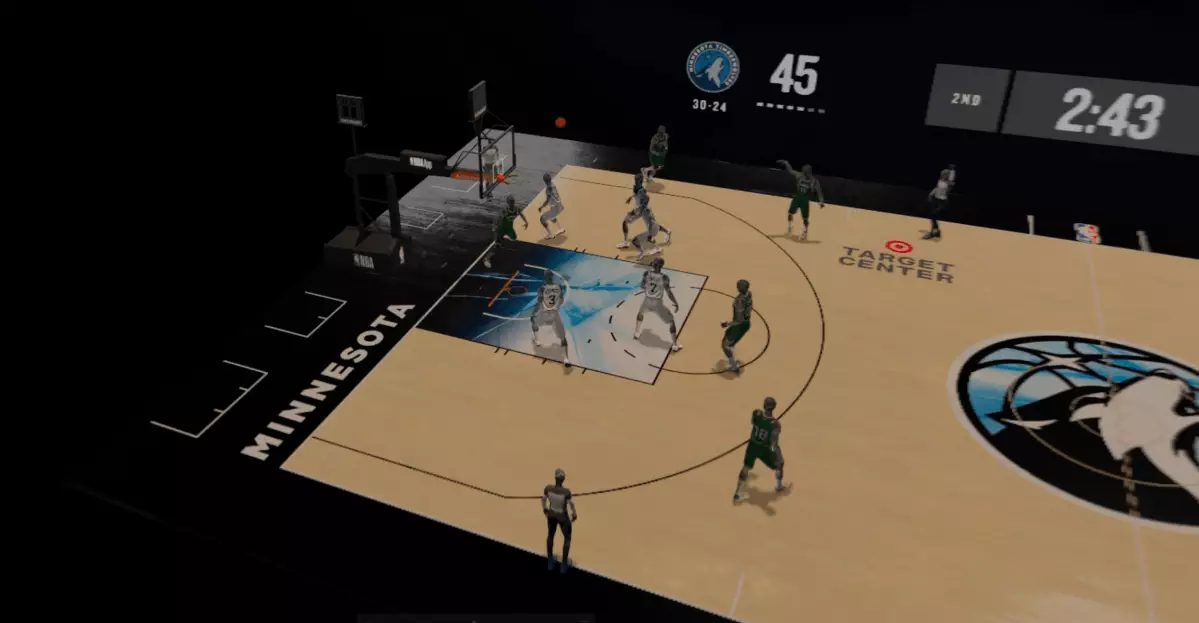The landscape of sports entertainment is experiencing a technological renaissance, with augmented reality (AR) leading the charge. In a striking move, the National Basketball Association (NBA) has launched an innovative feature called “Tabletop” within its Vision Pro app, designed exclusively for NBA League Pass subscribers. This groundbreaking tool allows fans to immerse themselves in a virtual representation of a basketball game as it unfolds in real-time. While such digital advances are setting new standards for fan engagement, they also raise several questions surrounding usability and accessibility.
Tabletop creates an augmented reality version of a basketball court that appears to float in the user’s physical environment during select live games. Fans can watch the action with animated avatars representing real players, showcasing movements like dribbling, passing, and shooting. This feature is not merely an upgrade to viewing habits; it represents a shift toward interactive and immersive experiences. Moreover, the NBA’s attention to local market integration allows for previously inaccessible games to be enjoyed by fans, enriching the overall viewing experience.
However, while the charm of watching avatars mimic real players is undeniable, the execution is crucial. Users have reported minor delays—approximately 45 seconds in some cases—between the live action and the audio feed upon initial testing. This discrepancy could impact the enjoyment for dedicated fans who thrive on the thrill of being “there” in the moment. While certain users were able to sync their feeds and minimize delays, the potential for inconsistency remains a matter of concern.
One of the most fascinating aspects of the Tabletop feature is its approach to visual representation. The avatars, designed in either a robotic or cel-shaded cartoon style, maintain clarity through uniform color coding based on team jerseys and the player’s name and number displayed above their head when in possession of the ball. This creative choice ensures viewer clarity, though it leaves room for debate regarding the aesthetic appeal, particularly among purists who may yearn for a more realistic depiction.
The success of this feature hinges significantly on its ability to engage fans undistractedly. Traditionalists may argue against deviating from familiar viewing formats, but the growing trend of AR technology suggests a tide change is imminent. Over time, fans may adapt and view these interfaces as indispensable, rather than excessive.
The implementation of the Tabletop feature draws parallels with other AR technologies employed in different sports, such as the Lapz Vision Pro app used during Formula 1 races. Yet, unlike its predecessor—which was ultimately axed by Formula 1—Tabletop is designed to enhance the NBA’s viewer experience rather than replace it. This distinction is vital; AR should complement traditional viewing experiences without entirely overshadowing them.
Additionally, the NBA has a history of adapting technology to keep fans engaged. For instance, during a past event, NBA Commissioner Adam Silver showcased a 3D scanning innovation that allowed a sports commentator to appear as a digital entity in a game clip. This experimentation reflects the league’s commitment to blending sports and technology in exciting ways, though the effectiveness of these experiments remains a point of discussion.
With the impending NBA All-Star events on the horizon, the timing of the Tabletop launch raises curiosity about its potential applications in high-profile games. Will augmented reality be a fixture in these marquee matchups, or will it remain confined to select games? As the NBA continues to explore mixed-reality technology, the fan base eagerly awaits clarity on the future of AR in basketball.
As the sports industry evolves through digital transformation, the introduction of features such as Tabletop underscores a larger movement toward greater interactivity. However, the success of such innovations will ultimately depend on user experience, technological reliability, and the ability to create seamless interactive moments that resonate with fans.
The NBA’s foray into augmented reality signifies more than just an innovative leap—it represents a potential redefinition of how we experience and interact with sports, ushering in a new era of engagement that blends the virtual with the visceral.

